
Hosted by the University of Plymouth

Hosted by the University of Plymouth
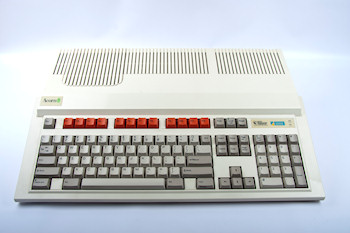
The last machine to bear the 'BBC Microcomputer' tag, the A3000 had 1MB of RAM and was powered by Acorn's own ARM2 processor running at 8MHz. The operating system was also Acorn's creation, RISC OS 2 (with the previous version having gone by the name of Arthur in the original Archimedes range). T... (read more)Acorn, 1989
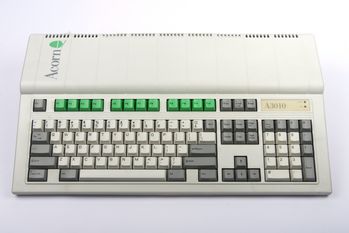
One of the final machines to be released in Acorns' Archimedes range, which had seen the company pioneer the use of RISC (Reduced Instruction Set Computing) CPU architecture. The CPU was an ARM 250 (which at the time stood for Acorn RISC Machine) running at 12 MHz; an ancestor of the StrongARM p... (read more)Acorn, 1992
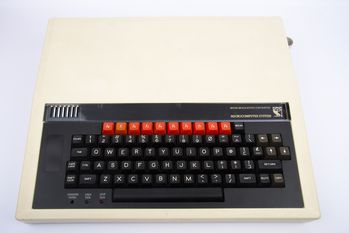
The Model B was an early member of the BBC Microcomputer System series, which were designed and built by Acorn Computers for the British Broadcasting Corporation's Computer Literacy Project. The Model B had 32K of RAM (as opposed to the 16K offered by its predecessor, the Model A), and was partic... (read more)Acorn, 1982
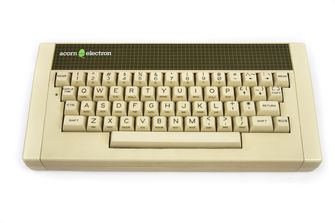
The Electron is essentially a budget version of the BBC Micro, branded under Acorn Computer's own name. Like the Model B, it has a 6502 CPU, 32K of RAM and uses the highly-regarded BBC BASIC , while the differences included far fewer external interfaces, and more limited graphics and sound (spec... (read more)Acorn, 1983
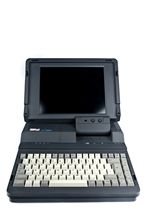
As the name suggests, the ALT-386SX is based on the Intel 80386SX (a version of the CPU without the mathematical coprocessor built-in), clocked at 16 megahertz. The system had 4MB of RAM and an 80MB hard disk, and a monochrome display supporting VGA graphics. While the design is now more remini... (read more)Amstrad, 1988

The first home computer produced by Amstrad, applying the same all-in-one approach that it had already pioneered in the hifi market by providing a system with built-in cassette deck and an accompanying monitor (the 464 came with a choice of green or colour screen). In addition to this value for m... (read more)Amstrad, 1984
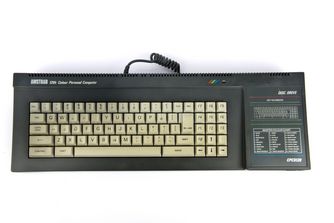
The 6128 was the third machine in the CPC series, appearing just a few months after the short-lived CPC 664. Key advancements over the 464 were the inclusion of the disk drive in place of the cassette deck, and a doubling of the memory to 128K (the 664 had the disk but just 64K RAM). This combin... (read more)Amstrad, 1985
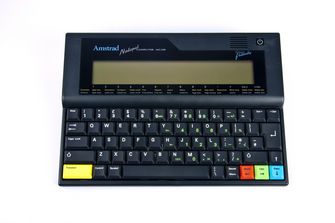
Following the success of Cambridge Computer's Z88 (Sir Clive Sinclair's first - and to date only - new computer following Amstrad's purchase of Sinclair Research), it was perhaps not surprising to see Amstrad appearing on the scene with a machine targeting the same market. Powered by the old-fait... (read more)Amstrad, 1992
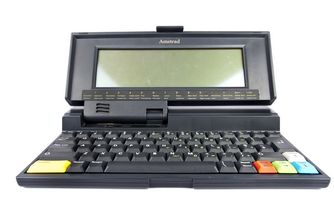
Although retaining the Notepad name (following the NC100), the 128K NC200 is more akin to a laptop, with the flip-up screen doubling the size to 16 lines, and including an MS-DOS compatible 720K floppy drive for storage. It was also somewhat heavier to carry about, a factor further emphasised by... (read more)Amstrad, 1993
An example of one of the many compatible clones that soon followed in the wake of the IBM PC. Amstrad was one of the pioneers of truly budget clone systems, having shipped their 512K, 8086-based PC1512 in 1986. The model shown here was their next version; a 640K PC, which also includes a 30MB ha... (read more)Amstrad, 1987
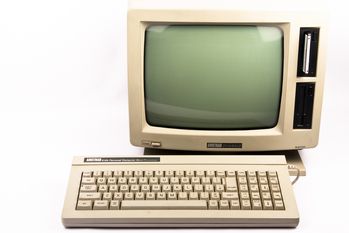
The PCW8512 was Amstrad's second machine aimed directly at home office and small business users, offering a fully integrated word processing solution. Like its predecessor, the PCW8256, the full system came complete with a dot matrix printer, as well as the Locoscript wordprocessing application.... (read more)Amstrad, 1986
Building upon the massive success of the PCW8256 ad 8512, the 9512 was Amstrad's attempt to update and enhance the range. In addition to the appearance being more akin to the traditional desktop machines of the era, the most notable changes were the inclusion of a daisywheel printer (as opposed ... (read more)Amstrad, 1987
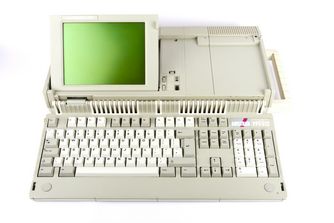
Having led the way with budget IBM-compatible systems on the desktop, the PPC 512 (and an accompanying release, the PPC 640) was Amstrad's first attempt to do the same thing for portable personal computing. The systems came with 512K and 640K RAM respectively, and used an 8086-compatible NEC V30... (read more)Amstrad, 1988
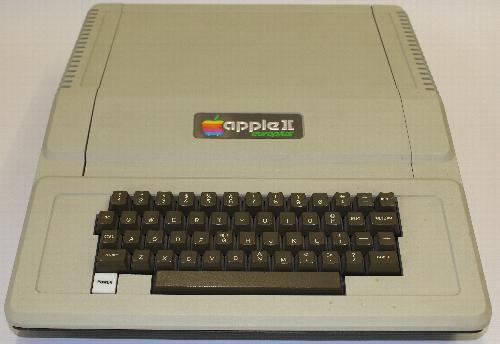
The Europlus was the European release of the original Apple II, released in the US a year earlier. Designed by Apple co-founder Steve 'Woz' Wozniak, the system was a seminal product in the history of personal computing. Using a 1MHz 6502 CPU, shipping with 4K of RAM (expandable to 48K) and incl... (read more)Apple, 1978
The first computer in the iMac range, marking a dramatic change in direction of the Macintosh product line following Steve Jobs return to the company in 1997. The system used a PowerPC G3 chip, with the original model running at 233MHz and shipping with 32MB RAM. One of the obvious distinguishi... (read more)Apple, 1998
The first computer in the iMac range, marking a dramatic change in direction of the Macintosh product line following Steve Jobs return to the company in 1997. The system used a PowerPC G3 chip, with the original model running at 233MHz and shipping with 32MB RAM. One of the obvious distinguishi... (read more)Apple, 1998
Based upon the PowerPC G4 processor, this version of the iMac was visually distinctive through its use of the flexible arm that held the screen, enabling it to be positioned rather like an anglepoise lamp. Notably, the machine was not actually sold as the iMac G4; it was simply known as the iMac... (read more)Apple, 2002
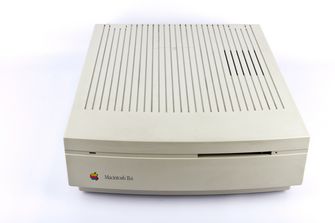
One of the later members in the Macintosh II family, which had notably seen the arrival of colour graphics and the departure from the integrated system unit and screen of the original Mac. The IIsi was powered by a Motorola 68030 running at 20MHz, and shipped with IMB of memory and either a 40 o... (read more)Apple, 1990
Where the Apple II was inextricably linked to Steve Wozniak, the driving force behind the Macintosh was Apple's other co-founder, Steve Jobs. Launched as 'the computer for the rest of us', the GUI-based Mac was a marked contrast to the already dominant IBM PC standard. The SE model shown here r... (read more)Apple, 1987
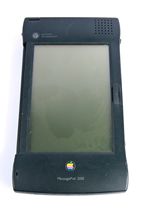
The Newton was an innovative, but somewhat ill fated device that aimed to revolutionise computing by offering mobile technology and enabling more natural interaction via handwriting recognition. It was the brainchild of Apple's then-CEO John Sculley, who was also responsible for coining the name... (read more)Apple, 1997
One of the original Atari 8-bit range, the 6502-based Atari 400 was one of two systems released to capitalise on the growing home computer market already, and to build upon Atari's existing success in video gaming. The 400 was released alongside the more powerful Atari 800, which bettered it by ... (read more)Atari, 1979
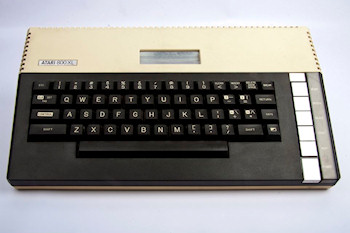
The 800XL is part of Atari's extensive family of 8-bit home computers, which began with the Atari 400 and 800 in 1979. The XL range essentially used the same technology (6502 processor alongside custom graphics and sound chips) as these earlier systems, but received a cosmetic overhall and, it t... (read more)Atari, 1983
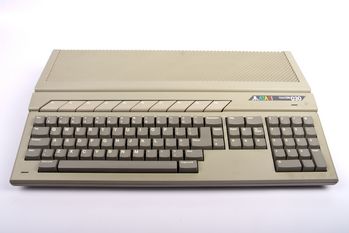
The Falcon was the final computer product to emerge from Atari Corporation. Sharing a visual similarity with Atari's highly successful ST range, and using the same TOS operating system and GEM-based graphical environment, the system was based on a Motorola 68030 CPU and had 4MB of RAM. Graphics ... (read more)Atari, 1992
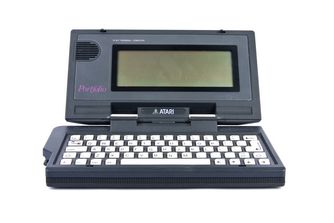
The Portfolio distinguishes itself as the first PC-compatible palmtop computer, with Atari having licensed the technology from a Guildford-based company called DIP. Powered by an 80C88 processor running at 4.9152MHz, the Portfolio had 128K of RAM and 256K ROM. The latter held the operating sys... (read more)Atari, 1989
A Windows Mobile 2003 Second Edition based PDA from the Dell Xn series. Wireless (802.11b) and Bluetooth support with 64MB of RAM and a separate 64MB of RAM. The X30 also supported SD/MMC/SDIO storage and offered a 3.5" 16-bit colour display. (read more)Dell, 2004
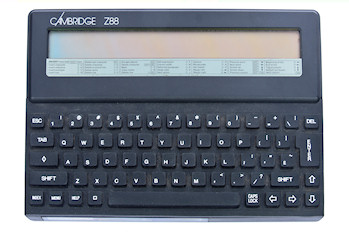
Brainchild of British personal computing pioneer Sir Clive Sinclair, the Z88 was produced by his new company Cambridge Computer Ltd after Sinclair Research was sold to Amstrad in 1986. The Z88 saw a return to Sinclair's use of the Z80 CPU, and the return of the rubber keyboard. In this case, how... (read more)Cambridge, 1988
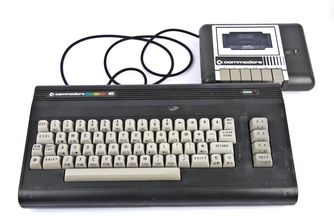
The Commodore 16 was released in 1984 and intended as an entry-level home computer to replace the popular but aging VIC-20. Taking its name from its 16K RAM, the C16 used a 6502-compatible 8501 CPU, and was originally sold in the UK as part of a Starter Pack including cassette unit and games for... (read more)Commodore, 1984
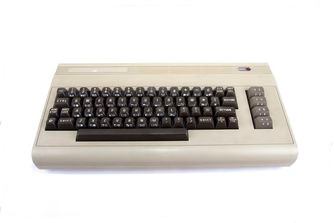
The Commodore 64 is one of the most popular home computers ever produced, described by the 2001 Guinness Book of Records as the most "prolific computing device ever manufactured" and selling around 30 million units until it ceased production in 1993. Taking its name from its 64K of RAM, the mach... (read more)Commodore, 1982
To all intents and purposes, this machine is the same as the original Commodore 64, but in a new case and with new (but functionally identical) versions of the graphics, sound and I/O chips. The aim was basically to make the system look a little more up-to-date (bringing its appearance into line... (read more)Commodore, 1986
One of the final models in the Amiga line, which had begin with the Amiga 1000 in 1985. An incredibly innovative and powerful computer in its day, the Amiga was notable for offering 4,096 colour graphics and synthesizer sound, leading to significant popularity as a games machine. Other capabili... (read more)Commodore, 1992
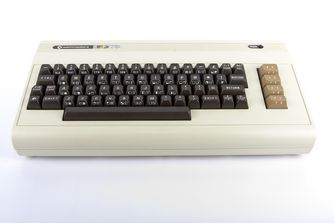
Taking its name from the MOS Technology Video Interface Chip that provided its graphics (176x184 pixels in 16 colours), the VIC-20 was Commodore Business Machines' first foray into the home computer market, following the success of its PET range of business systems. The VIC-20 came equipped with... (read more)Commodore, 1980
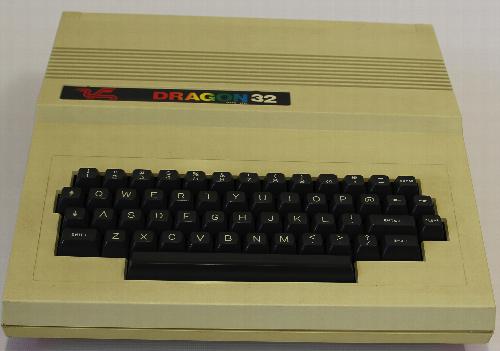
In many ways a Welsh clone of the Tandy TRS-80 Color Computer, the Dragon 32 was particularly popular in the Christmas of 1982... thanks in part to the short supply of the ZX Spectrum. In common with the Tandy system, it used a Motorola 6809E processor, setting it apart from the many Z80 and 650... (read more)Dragon Data, 1982
The successor to the original IBM PC and the subsequent PC XT, the AT (for Advanced Technology) saw the adoption of the Intel 80286 CPU (the original PC had used an 4.77MHz Intel 8088), higher capacity floppy disks (1.2MB) and a 20MB hard disk. This particular model was 'rescued' from a skip bes... (read more)IBM, 1984
Coming from the same stable of one of the more deluxe video game consoles of the era (the Intellivision), there may have been some expectation of a similar high-end performance from the Aquarius. However, the system targeted the budget-conscious end of the market, with the 4K RAM and rubber keyb... (read more)Mattel, 1983
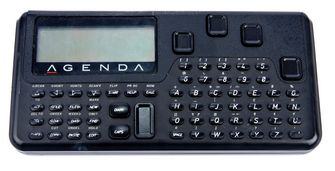
One of the first examples of the type of device that would later become known as a PDA, the AgendA was equipped with 32K RAM, a 4-line LCD display, a series of built-in applications (wordprocessor, database, calculator, to-do list, organiser, and alarm), and programming language called ABC (a Pas... (read more)Microwriter Ltd, 1989
Released by Osborne Computer Corporation, the OCC 1 (to give it's proper model number) was the first commercially successful portable computer. Powered by a 4Mhz Z80 processor, alongside 64K of RAM and two 5 1/4" drives, the system ran the popular CP/M operating system. One of its notable selli... (read more)Osborne Computer Corporation, 1981
The PowerBook range offered users the Mac experience on the move, and was available from 1989 through to 1998 (with over 30 models being released during this period). The 145B was a relatively early model and was powered by a Motorola 68030 processor running at 25MHz, with 4MB of RAM, an 80MB ha... (read more)Apple, 1993
While 1984's original Psion Organiser had delivered a usable pocket computer, it was the Organiser II that set the standard for what would become known as Personal Digital Assistant devices. The Organiser II was released in three main guises - CM (8K), XP (16K) and LZ (32K). The LCD display on ... (read more)Psion, 1986
Psion Series 3 boxed with full set of manuals.
Additional items include:
Parallel Link
Serial Link
Spell checker/thesaurus (read more)Psion, 1991
The third variant to be released within Psion's popular Series 3 range, which began in 1991, the 3c displayed here is a 1MB device running an NEC V30H processor at 7.68MHz. One of the notable advantages of the device was the long life (20-35 hours) that it was able to squeeze out of two AA batte... (read more)Psion, 1996
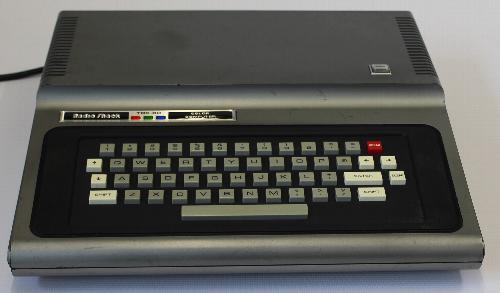
Tandy Radio Shack TRS-80 32k Color Computer (read more)Tandy, 1980
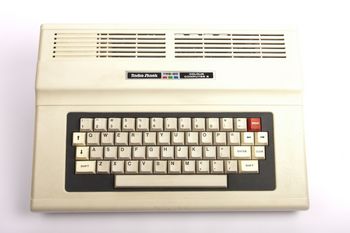
Taking the acronym in its name from the parent company, Tandy Radio Shack, this machine is a relative of the original TRS-80 system from 1977. The Colour Computer 2 (or CoCo2) came with 16K or 64K RAM, and used the Motorola 6809E processor (a less common processor than the Z80 or 6502, but still... (read more)Radio Shack, 1983

Launched with 128K RAM, twin 100K microdrives, 32-bit processor (well - sort of), and priced at £399, the QL truly looked like the claimed Quantum Leap beyond Sinclair's earlier ZX Spectrum. The price also included four highly praised applications developed by Psion: Quill (a wordprocessor), Ab... (read more)Sinclair, 1984
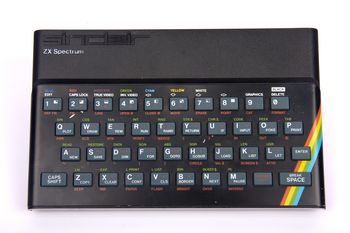
The ZX Spectrum was an 8-bit (Z80A) personal home computer released in 1982 by Sinclair Research Ltd. Originally released in 16K and 48K versions, the Spectrum became massively popular in the UK, and ultimately evolved through a variety of later models including the Spectrum+ (which added a bett... (read more)Sinclair, 1982
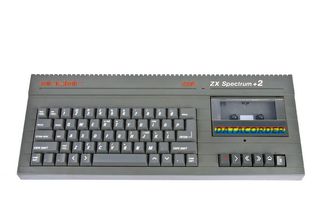
Although it retained the Sinclair name, the Spectrum +2 was a product from the Amstrad stable, following their purchase of Sinclair in 1986. As such, it is no coincidence that the design bears more than a passing resemblance to Amstrad's own CPC 464 system. A later variant, the Spectrum +3, con... (read more)Sinclair, 1986
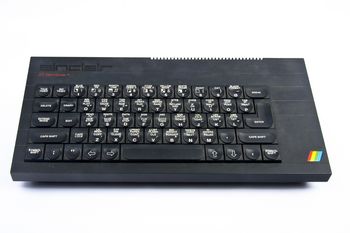
An update to the Spectrum that essentially took the 48K model and added a QL-style keyboard, enabling the Spectrum to at least in part escape the criticism that was often leveled at the 'dead flesh' feel of the rubber-keyed version (although in actual fact the feel of the keyboard was still very ... (read more)Sinclair, 1984
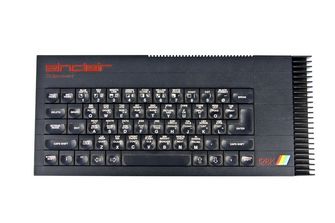
The last Sinclair-branded computer to truly from the Sinclair stable, the Spectrum 128 debuted in Spain, thanks to co-development with Sinclair's Spanish distributor Investrónica, and did not launch in the UK until into the new year. In addition to the upgraded memory, the system boasted an enh... (read more)Sinclair, 1985
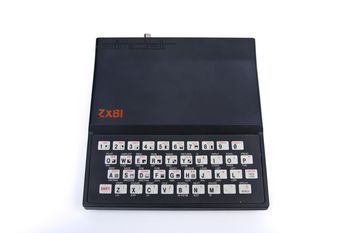
The Sinclair ZX81 was released by Sinclair Research as the follow-up to the successful ZX80. It shared its predecessors characteristics of a Z80 CPU, membrane keyboard, 1K RAM, black and white display and lack of sound. The ROM, however, was doubled to 8K and the machine ran faster. Like the Z... (read more)Sinclair, 1981
Launched by Intertec Data Systems, the Superbrain was a disk-based system running the popular CP/M operating system. The base model came with 16K of RAM, upgradable to 64K, and the twin 5¼-inch drives could store 170K each (with single-sided drives) or 340K (for double-sided units). Like many ... (read more)Intertec Data Systems, 1980
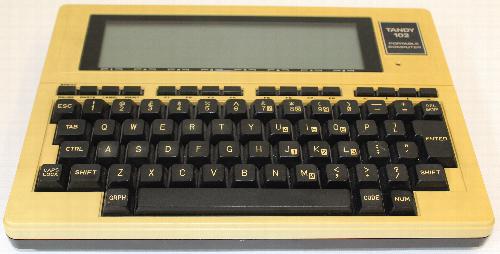
A successor to the popular Model 100, the 102 retains the same basic form factor in a slightly thinner case. The system came with 24K, with this model having been expanded to 32K. The built-in software includes a text editor, address book, and scheduling, as well as a Microsoft BASIC interpreter... (read more)Tandy, 1986
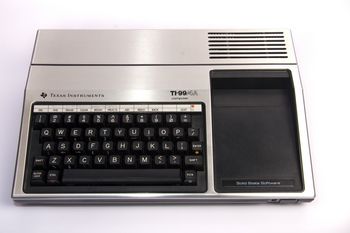
The TI-99/4 series was notable for being the first personal computers to offer 16-bit processors. The TI-99/4A has a TMS9900 CPU running at 3MHz, with 16K RAM and a further 16K of video RAM (supporting a graphics resolution of 256x192 on 16 colours). In addition, software could be purchased on ... (read more)Texas Instruments, 1981
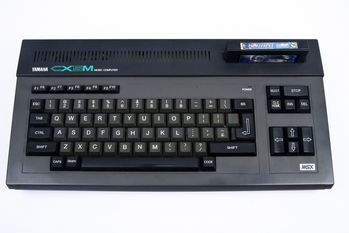
An example of a system based upon the MSX standard, launched in Japan in 1983. Supported by Microsoft, MSX was intended to do for home systems what the IBM PC standard was already doing in the business domain. Based around the popular Z80 CPU, a host of well-known consumer electronics companies ... (read more)Yamaha, 1984